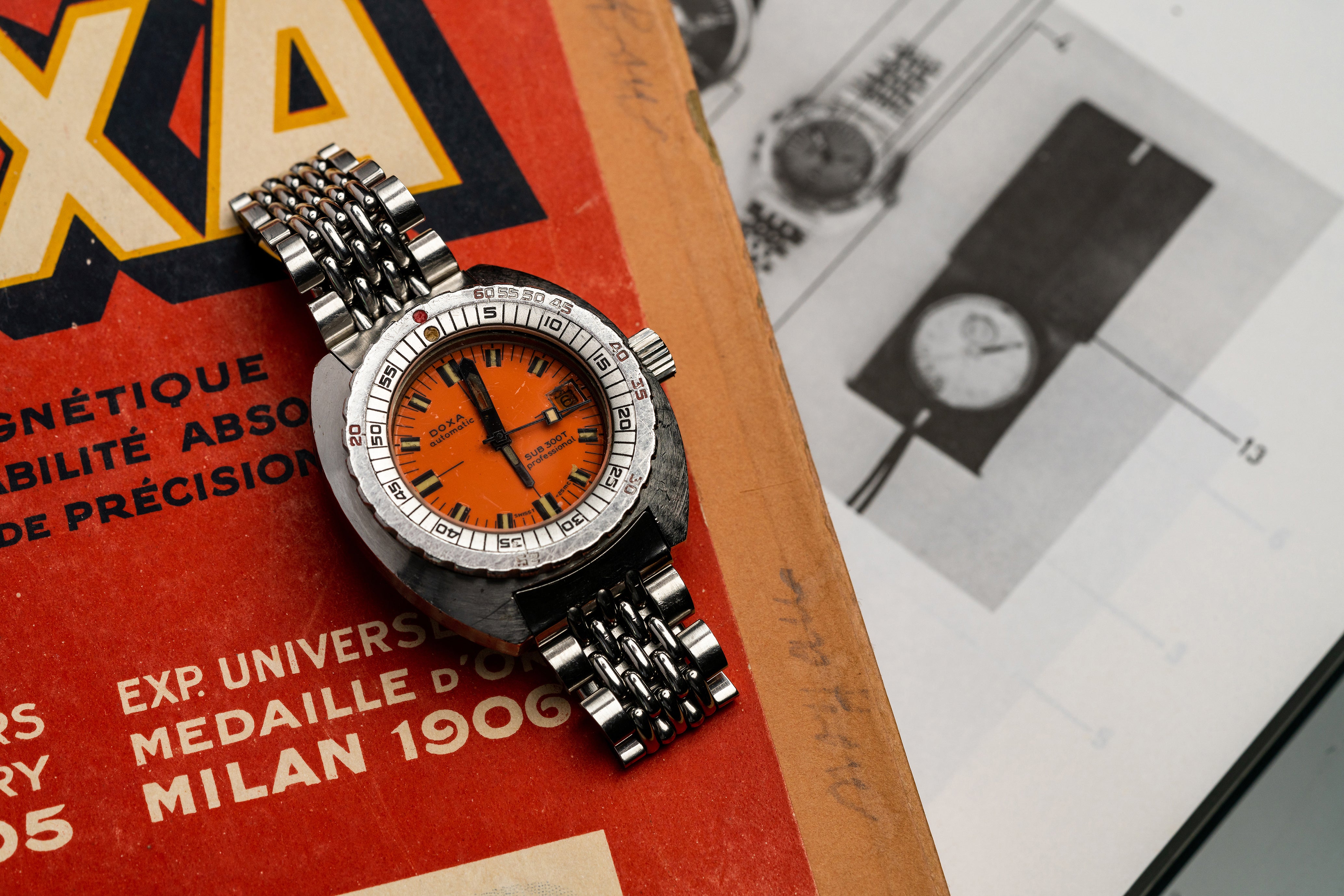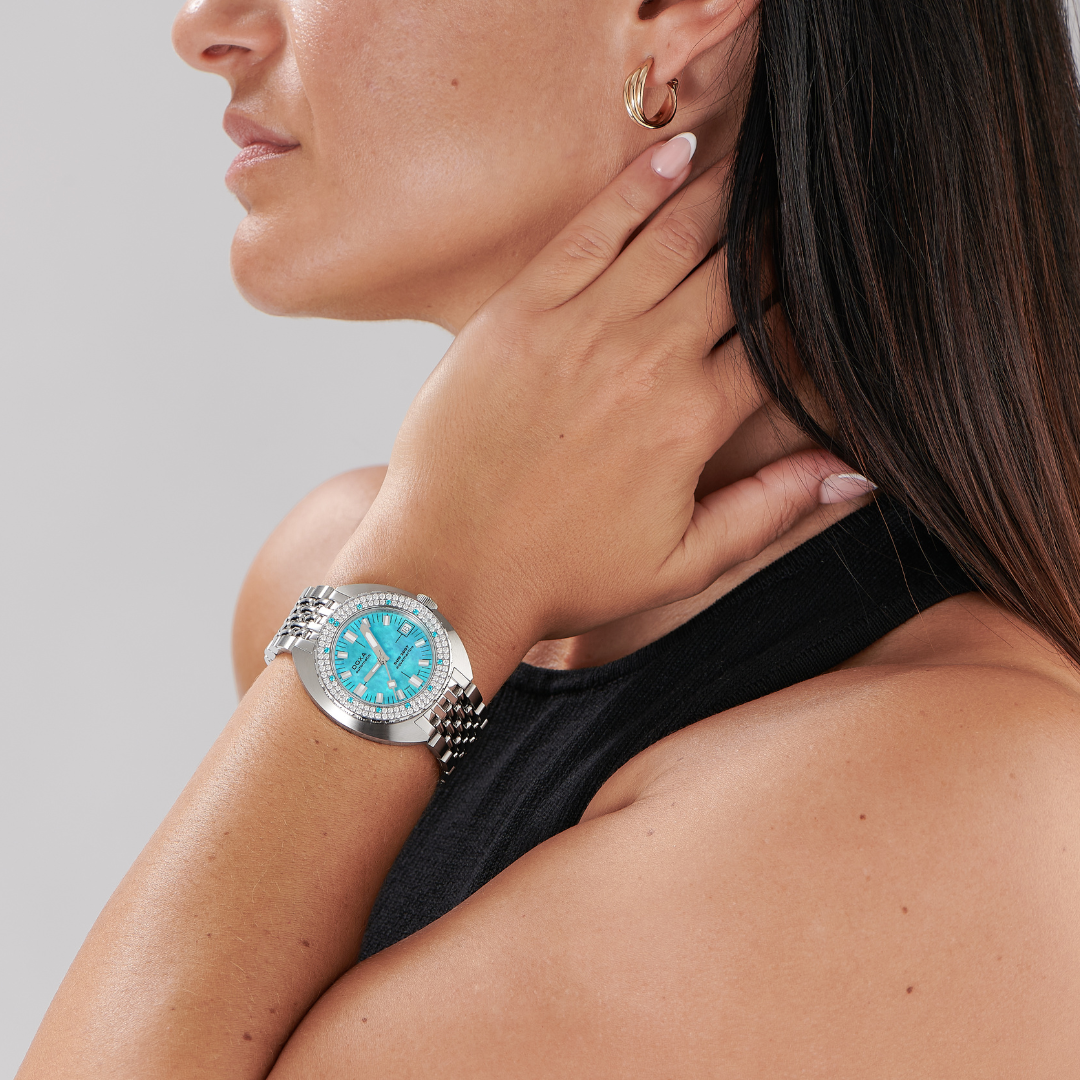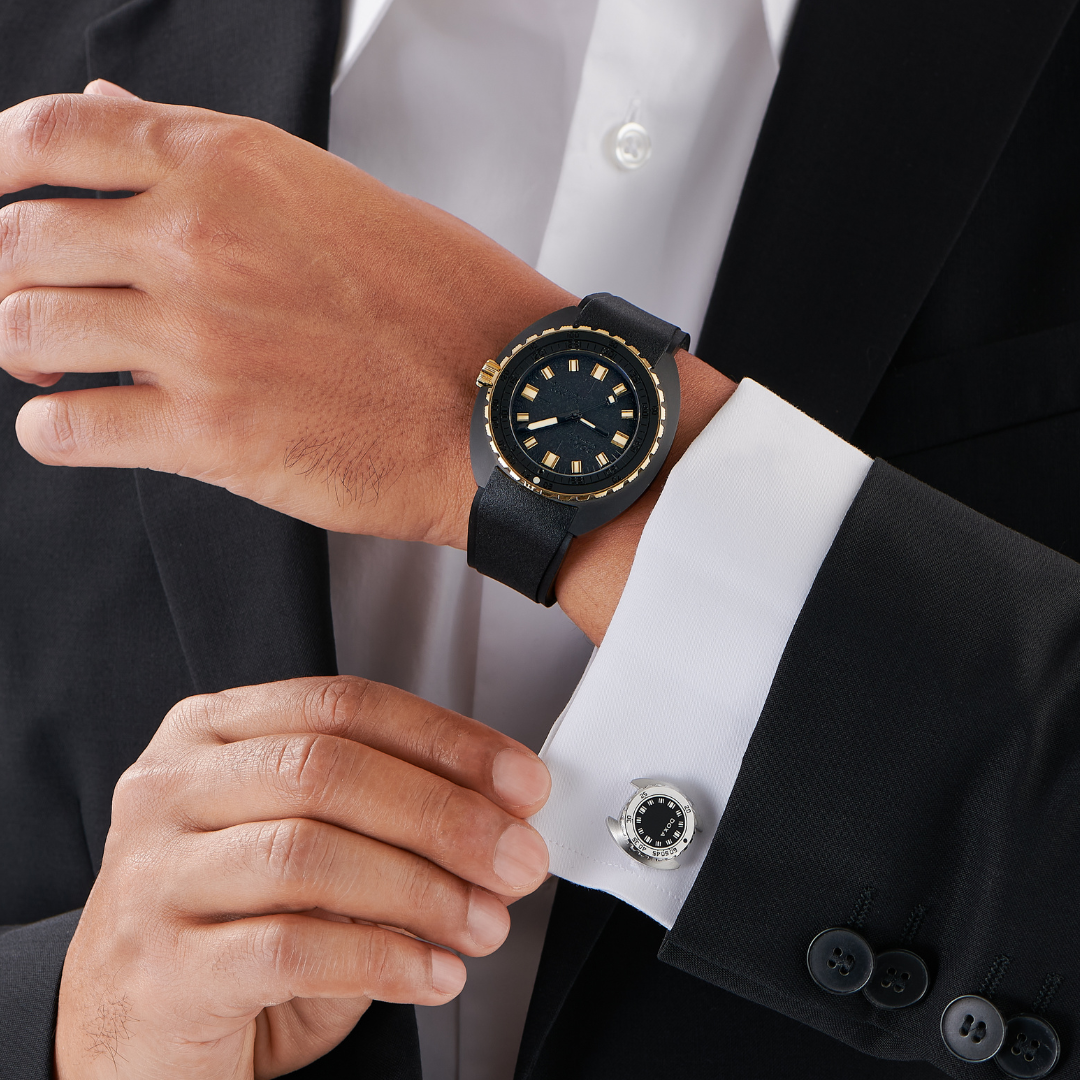
60 years of DOXA bracelets
This is a watch that is recognised as much for its dial (orange) as its bracelet (beads of rice). The rare story of an accessory that is anything but.
What is the point of developing the most accurate and trusted diver's watch if it doesn't stay on your wrist?
This question seemed obvious from the moment the first SUB 300 was designed by DOXA, in the mid-1960s. Among numerous innovations relating to the colour, dial and bezel scale, some third-party companies developed extendible bracelets which soon became popular with the diving community. These included a model manufactured by the German-made Kiefer-Cadman and quickly dubbed the "Expandro", thanks to its capacity to extend a few millimetres to allow it to fit over a wetsuit. The system involved an additional link nestled in the hollow of the deployant buckle, with a safety push-button to prevent this link from accidentally opening or retracting further. The method was not without problems, but it paved the way for subsequent developments before disappearing in the 1980s.

Natural rubber straps were not yet the norm, therefore the rack-type mechanism was used on steel bracelets. The SUB was manufactured with three main versions of this bracelet, featuring four different deployant buckles which could be distinguished by their different widths and their logo variations. The inside of the buckle on the wrist side was also engraved with the name of the invention, as well as the patent number as filed in Germany: 2111820.
The huge success of "beads of rice"
In terms of aesthetics, it is quite clearly the first bracelet with the so-called "beads of rice" links which made the brand famous. However, variants appeared very quickly, particularly on the Searambler models, with more modern steel (flat links) or mesh bracelets, which were extremely fashionable in the early 1970s.

Nevertheless, the beads of rice bracelet was the most popular version, which is why it was found on most SUB variants throughout the 1960s and 1970s: Sharkhunter, Searambler, Searaider, 300T, 600T and 750T.
The story continued with a model called the Divingstar in 2005, which still featured the beads of rice bracelet. In 2006, a SUB 750T Sharkhunter Military was introduced with an all-black beads of rice bracelet.

Ladies' versions
In the early 1970s, DOXA manufactured a certain number of ladies' versions, which was considered highly original for diver's watches at that time. The SUB 200 Coralline, Nymph and Seamaid were all equipped with beads of rice bracelets, demonstrating that, in line with the fashion of the time, these were smaller versions of the men's models.

The turning point of the 1980s
At the start of the 1980s, the first flexible synthetic bracelets made an appearance. They were initially found on a quartz model, the SUB 200T.
It was also at this time that a new version of the SUB 600T appeared, a so-called Vintage version, whose beads of rice bracelet was also replaced by a more traditional three-link bracelet which was easily recognisable thanks to its extendible deployant buckle no longer bearing the word DOXA, but instead a double "D". This 600T was also available in quartz with a rubber strap. This strap was also developed to be able to adapt to most of the earlier 600T models; an option which a lot of divers couldn't live without!

Turn of the century
To celebrate 35 years since the launch of the SUB 300T, in August 2002 DOXA decided to re-manufacture this legendary watch with an entirely new bracelet, far removed from the beads of rice aesthetic. It was a smart bracelet with a single central link, leaving considerable room between each to allow sand and water to flow through easily – not unlike a chain. An unusual idea in terms of aesthetics but very clever in practical terms.

The modern era
2003 saw the introduction of a new version of the 600T. Its bracelet adopted the original aesthetic of the beads of rice design but, in reality, it was an entirely revamped construction following an attempt to impose a new watch case profile with highly prominent lugs – an initiative that was not well received by the public.
DOXA took this on board and the bracelet on the 600T that followed was therefore more precious, with more tightly-spaced links and four inner rows of beads of rice which were perfectly polished. The upgrade was evident. This more subtle new generation bracelet was also a perfect means of seduction for the brand's ladies' collections.
Today, the beads of rice bracelet remains the reference for most collectors. DOXA also offers an alternative geometry reproduced on a rubber strap and inspired by a mesh whose bright colour complements the broad graphic palette of the contemporary collections. The so-called "professional" models, in particular the 600T and 1500T, have modernised steel bracelets. Their links now have a more modern look than the "beads of rice".
Today's divers are also fans of FKM, a new reference elastomer notable for its resistance to variations in temperature, UV and saline environments, as well as tension and torsion. DOXA has developed numerous references by experimenting with three variables: colour (blue, orange, turquoise, black, etc.), attachment type (pin buckle or folding clasp) and surface finish (smooth or textured). There is also an FKM version which reproduces the mesh.







